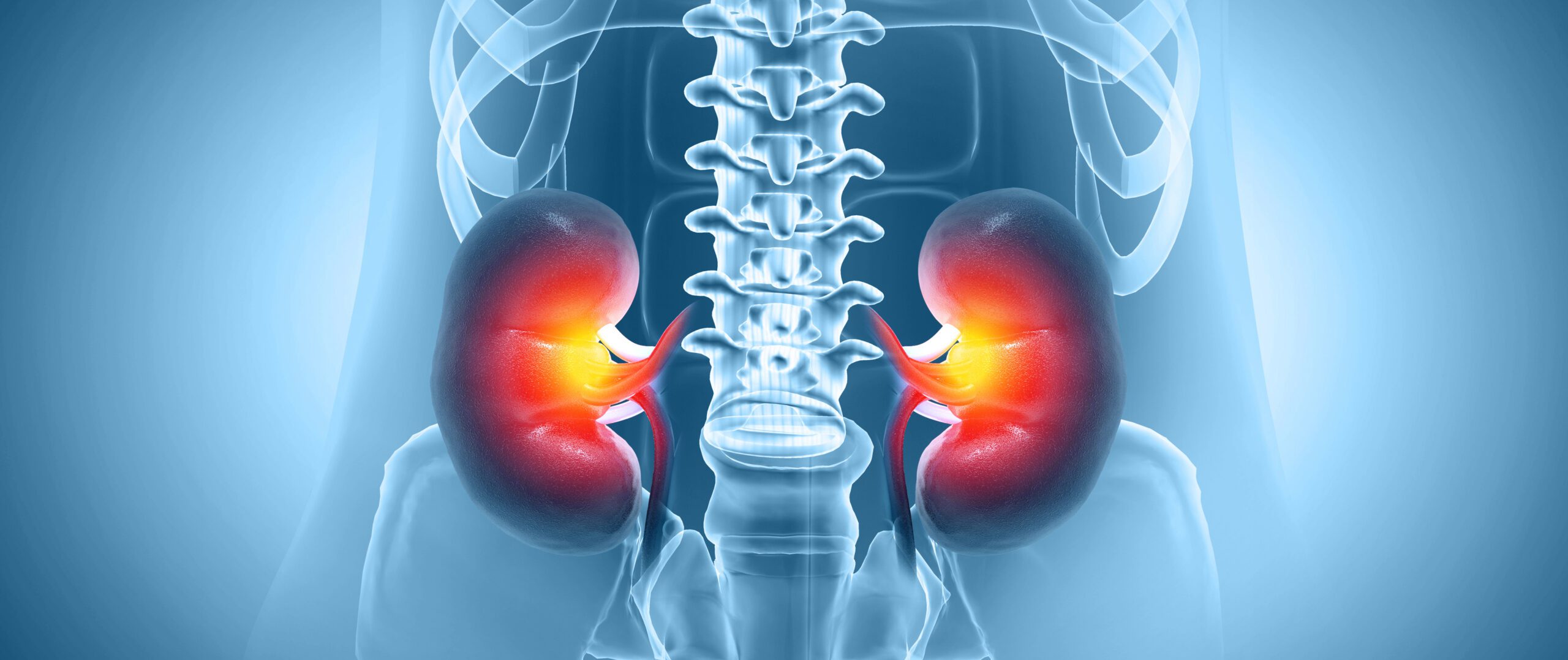The brain in multiple sclerosis shows structural and functional changes early in the disease process – even before cognitive deficits become manifest. Brain atrophy is currently considered the best correlate to cognitive status. However, the cognitive disorders are overall the result of a complex network dysfunction and not attributable to the dysfunction of individual brain areas. Strengthening cognitive reserve through physical and cognitive training should be a preventive and therapeutic focus.
Along with fatigue and affective disorders, deficits in cognitive performance are among the key symptoms of multiple sclerosis (MS), which can have a strong negative impact on the quality of life of those affected, but also have a decisive influence on therapy adherence. Prevalence rates are reported as 43% [1] to 60% [2], depending on the studies. Thus, about one in two MS patients suffers from cognitive impairment. The deficits may occur early in the course of the disease and may also manifest as initial symptoms. They are largely independent of the degree of disability and are also described in patients with a benign course [3]. Unlike dementia-related processes, the progression of cognitive deficits in MS is considered moderate. The strongest development is seen in the first five years [4], so that an early neuropsychological diagnosis of the so-called core deficits, taking into account possible covarying factors, is of great clinical relevance.
Core cognitive deficits
Not all cognitive domains are equally impaired in MS, so generalized cognitive decline rarely occurs. The fact that certain cognitive sub-aspects are more affected than others has ultimately led to the term “core cognitive deficit” [5]. This includes functions such as mental flexibility, verbal and visuo-spatial short-term memory, and information processing speed. Cognitive dysfunction can have a strong negative impact on the quality of life of those affected, regardless of the severity of physical symptoms. Various studies show that cognitively impaired patients are less likely to be employed, require more support in managing daily life, and are less socially involved compared to patients without cognitive impairment [6]. In addition, it was shown that information processing speed in patients with newly diagnosed MS was predictive of their occupational status after seven years [7]. This means that recording cognitive performance from the outset – in addition to the personal relevance for those affected, which should not be underestimated – can also be of significant health economic importance.
Cognitive disorders and imaging
Although conventional magnetic resonance imaging (MRI) plays a major role in diagnosing MS and documenting its course, it is not a suitable correlate for cognitive dysfunction. Thus, it is also not surprising that initial studies correlating mainly T2 lesion load and T1 hypointensities with cognitive performance were disappointing [8–10]. Only the focus on regional lesion load yielded interesting correlations with specific cognitive subsets of performance [11,12].
Currently, the best correlate to cognitive performance is brain atrophy, whether focal or global. Therefore, efforts should be made to integrate atrophy testing into routine clinical practice in addition to cognitive screening tools. Here, however, the primary problem arises in the post-processing of the collected data with specialized analysis methods such as SIENAX, a software that is hardly ever used in the private practice sector, for example. Alternatively, the size of the third ventricle not only shows a very good relation to cognition [13,14], but also has a predictive value [15].
Measurement of the third ventricle is a reasonable effort to document the evolution of atrophy in annual follow-up examinations and ensures a good cost-benefit ratio.
Besides brain atrophy, there is another MRI parameter with good correlative and predictive value with regard to cognition in MS. This is the magnetization transfer ratio (MTR). With this method, microstructural changes in the normal-appearing white matter (NAWM) can be characterized more precisely. Some studies have found correlative associations, particularly in early disease, with cognition in MS [16,17], suggesting that early-onset axonal degeneration of intercortical network fibers contributes to cognitive impairment.
This raises the actually relevant and crucial question of why cognitive impairment occurs in MS in the first place. The quality of the functional efficiency of cognitive processes is not primarily dependent on the integrity of individual cortex areas, but rather on the correct interaction of a complex network. From this, it can be hypothesized that the cognitive changes are the result of complex network dysfunction. Early indications that MS is experiencing network disruption resulted from Default Mode Network (DMN) investigations. This network is consistent across healthy individuals and involves the posterior cingulate, precuneus, medial prefrontal cortex, and inferior parietal cortex. This network is maximally activated when a person is in a relaxed resting state and not engaged in any cognitive activity. Maximum deactivation occurs as soon as the brain transitions to cognitive activation. Thus, there is a frequent change between activation and deactivation in order to be able to adapt optimally to external conditions. In MS patients with a progressive course, this DMN has been found to be altered [18] and that these alterations, mainly affecting the frontal portions of the network, seem to be closely related to the observed cognitive deficits. In patients with a relapsing course, the results are not quite so clear. In a study that focused primarily on information processing speed, patients showed connectivity changes in motor and visual networks but not in the DMN. In contrast, Cruz-Gomez and colleagues [19], who considered different cognitive domains in patients with relapsing-remitting disease, also reported changes in the DMN. It can thus be concluded from the above findings that network changes are related to cognitive changes, but that the results are strongly dependent on the chosen cognitive criterion as to when a patient is classified as cognitively impaired.
Diagnostics of cognitive disorders
Reliable diagnosis of cognitive deficits is urgently advised in view of the high prevalence rates and the strong negative impact on different areas of patients’ lives. Neuropsychological diagnostics are carried out by means of standardized and normed test procedures with which cognitive performance can be reliably mapped. However, a comprehensive neuropsychological examination is time-consuming, costly, and can only be performed by trained professionals. Since these prerequisites are usually not given in clinical routine, different screening methods have been developed, which allow a time- and cost-efficient objectification of the core cognitive deficits relevant in MS in clinical routine.
To this end, and to ensure an international standard, the implementation of the Brief International Cognitive Assessment for Multiple Sclerosis (BICAMS) was recommended by an expert panel in 2012 [20]. BICAMS represents a consensus attempt to achieve homogenization in the assessment of cognitive deficits in MS worldwide and thus to enable international comparison. Due to their good psychometric properties, the following three test procedures are recommended in BICAMS: SDMT, CVLT-II and BVMT-R. For CVLT-II and BVMT-R, it was decided to include only the learning trials.
This means that the CVLT-II requires the first five learning sessions to be completed and the BVMT-R requires three learning sessions to be completed. The total execution time for BICAMS is 15 minutes. For users who cannot make this time commitment, it is recommended that at least the SDMT be performed regularly (at least once per year).
SDMT: In the Symbol Digit Modalities Test (SDMT [21]), patients are presented with nine symbols with the corresponding assignment of numbers 1-9. The task is to assign the correct number to the respective symbol within 90 seconds and to state this number aloud to the examiner. The template with the correct assignments remains visible to the patient throughout the test procedure. This test measures information processing speed and working memory. The SDMT has been shown to be a sensitive, reliable, and practical test for everyday clinical use. Based on the aforementioned problems patients have with the PASAT, it is likely that the SDMT will increasingly supplant the PASAT in frequency of use.
CVLT-II/VLMT: The California Verbal Learning Test-II (CVLT-II [22]) and the Verbal Learning and Memory Test (VLMT [23]) are both procedures used to test verbal short- and long-term memory and verbal learning ability. In CVLT-II, patients are read 16 words, four of which belong to each higher-level category (e.g., clothes, vegetables). Patients should memorize as many words as possible and reproduce them immediately after presentation. There are five repetition passes. This is followed by a second learning list that serves as an interference task. Afterwards, the patients are asked to freely repeat the word list they learned first. After about 30 minutes, a late recall is conducted to check how stable the recall of the words from the first learning list is over time. Last is a recognition test in which the words from the two learned learning lists are presented along with words not yet presented. The task is again to recognize only the words from the list learned first.
The VLMT is similar in structure, except that only 15 words are presented and there are no higher-level word categories. In the German validation of the BICAMS, the VLMT is used because this instrument provides very good norm data.
BVMT-R: The Brief Visual Memory Test-Revised (BVMT-R [24]) measures visuospatial short- and long-term memory and recall performance. Patients are presented with a sheet of six geometric shapes for ten seconds. Then the patients should draw these shapes and their localization as accurately as possible on a blank sheet of paper. There are a total of three passes, during each of which the patients have ten seconds to memorize the six shapes and their localization. After 30 minutes, there is also a late recall on this test to check long-term visual-spatial memory. In a final step, the patients’ recognition performance is tested by presenting the figures to be memorized mixed with new shapes.
CAVE: At the BICAMS only the learning trials are performed!
Therapy of cognitive disorders
The question whether a therapy of cognitive disorders is useful or not should be answered in each individual case after neuropsychological diagnostics have been performed. Unfortunately, there is currently no evidence-based gold standard.
Immunomodulatory substances: Common immunomodulatory agents (interferons and glatiramer acetate) provide some protection against further deterioration of cognitive performance by dampening the inflammatory response. However, a specific efficacy is to be classified as rather moderate. Data are available on this from four studies documenting a favorable effect on brain performance [25–28].
In summary, these studies show that basic therapeutics can indeed co-influence cognitive functions in a positive way. However, to ascribe efficacy specific to cognition to basic therapeutics seems overstated.
Symptomatic non-pharmacological treatment approaches: Since the evidence of efficacy of pharmacological therapies is not convincing so far, non-pharmacological therapeutic approaches are an alternative to be considered.
On the efficacy of sport and exercise (exercise training) on the cognitive performance of MS patients, there are currently only two randomized controlled trials that concluded negatively [29,30]. This is in clear contradiction to the positive results found in gerontological studies [31–33]. However, looking at cross-sectional studies in MS patients with different levels of disability, a positive effect of exercise training on cognitive performance is found [34].
In addition to exercise, cognitive rehabilitation offers a promising treatment alternative. The underlying concept is that cognitive partial performance is trained by means of cognitive stimulation in order to stimulate alternative communication pathways in the brain and thereby improve the performance of patients. In a study by Penner and colleagues [35] MS patients were treated with a computerized working memory training “BrainStim” [36]. Here, both after four weeks of intensive training and after training spread over eight weeks, the patients were shown to improve significantly in their performance [37]. In addition, the patients improved in the expression of their fatigue symptoms after successful training. Against this background, cognitive rehabilitation can be understood as an intervention whose primary goal is to bring about changes in both psychosocial aspects (e.g., motivation, fatigue) and specific neural circuits.
Studies that additionally examined the effectiveness of a cognitive intervention by means of functional (MRI) were able to show that after successful training additional brain areas were activated that were directly related to the cognitive processes examined [38–41].
Conclusion and summary
Due to their high prevalence, cognitive disorders are not only serious symptoms in the context of MS disease, but should be given the same importance as EDSS progression, relapse rate, and MRI changes in terms of assessing disease activity and progression. Recognizing, clearly diagnosing and characterizing the cognitive disorders is an important first step that should no longer be missing from any neurological workup. Methodologically very good screening procedures are available, which are time- and cost-efficient. The SDMT can detect a deficit in the central cognitive domains, information processing speed and working memory, in five minutes. Therapeutically, good pharmacological approaches are currently lacking. Non-pharmacologically, cognitive and exercise interventions represent interesting and potent opportunities to positively impact cognitive reserve.
For a long time, impairments in cognitive performance in the context of MS received little attention. However, if one interviews the sufferers themselves, it quickly becomes clear that the deterioration in cognitive performance burdens the patients far more than their physical symptoms. It is now known that almost every second person with MS will sooner or later complain of such changes. Scientifically, interest in cognition has changed to accept it as a major endpoint in intervention studies, to investigate its extent and cause in depth in studies using newer imaging techniques, and to try to improve it therapeutically for patients using cognitive rehabilitation approaches. However, little has changed to date in the place of cognition in clinical practice. Here, relapse rate, EDSS progression, and number of gadolinium-enriched foci continue to be the focus when documenting disease progression and disease activity. Lack of time is often cited as a reason for continuing to pay little attention to cognition (in addition to a lack of reliable and sensitive measurement tools and a lack of available therapy). This leaves behind insecure patients whose suffering is constantly growing and who often feel misunderstood by their doctors.
Literature:
- Rao SM, et al: Neurology 1991; 41: 685-691.
- Benedict RH, et al: JINS 2006; 12(4): 549-558.
- Amato MP, et al: J Neurol 2006; 253(8): 1054-1059.
- Amato MP, et al: Arch Neurol 2001; 58: 1602-1606.
- Calabrese P, Penner IK: J Neurol 2007; 254: 18-21.
- Amato MP, et al: Arch Neurol 1995; 52: 168-172.
- Ruet A, et al: J Neurol 2013; 260: 776-784.
- Camp SJ, et al: Brain 1999; 122: 1341-1348.
- Fulton JC, et al: AJNR 1999; 20: 1951-1955.
- Rovaris M, et al: Neurology 1998; 50(6): 1601-1608.
- Pujol J, et al: NeuroImage 2001; 13: 68-75.
- Sperling RA, et al: Arch Neurol 2001; 58: 115-121.
- Benedict RH, Carone DA, Bakshi R: J Neuroimaging 2004; 14: 36S-45S.
- Tiemann L, et al: Mult Scler 2009; 15(10): 1164-1174.
- Deloire MS, et al: Neurology 2011; 76(13): 1161-1167.
- Deloire MSA, et al: JNNP 2005; 76: 519-526.
- Khalil M, et al: Mult Scler 2011; 17(2): 173-180.
- Rocca MA, et al: Neurology 2010; 74(16): 1252-1259.
- Cruz-Gomez AJ, et al: Mult Scler 2013 [Epub ahead of print].
- Smith A: Symbol Digit Modalities Test. 1973.
- Delis DC, et al: California Verbal Learning Test. 2000.
- Helmstaedter C, Lendt M, Lux S: VLMT – Verbal Learning and Memory Test. Manual. 2001.
- Benedict RH: Brief Visuospatial Memory Test-Revised (BVMT-R). Lutz, FL: 1997.
- Langdon DW, et al: Mult Scler 2012; 18(6): 891-898.
- Fischer JS, et al: Ann Neurol 2000; 48: 885-892.
- Penner IK, et al: Mult Scler 2012; 18(10): 1466-1471.
- Patti F, et al: Mult Scler 2010; 16(1): 68-77.
- Ziemssen T, et al: J Neurol 2014 [Epub ahead of print].
- Oken BS, et al: Neurology 2004; 62(11): 2058-2064.
- Romberg A, Virtanen A, Ruutiainen J: J Neurol 2005; 252(7): 839-845.
- Colcombe S, Kramer AF: Psychol Sci 2003; 14(2): 125-130.
- Colcombe SJ, et al: Proc Natl Acad Sci U S A 2004; 101: 3316-3321.
- Jedrziewski MK, et al: Alzheimers Dement 2010; 6(6): 448-455.
- Prakash RS, et al: NeuroImage 2007; 34(3): 1238-1244.
- Penner IK, Kappos L: J Neurol Sci 2006; 245: 147-151.
- Penner IK, Kobel M, Opwis K: BrainStim. 2006; 17-18.
- Vogt A, et al: Restor Neurol Neurosc 2009; 27: 225-235.
- Chiaravalloti ND, et al: J Neurol 2012; 259(7): 1337-1346.
- Filippi M, et al: Radiology 2012; 262(3): 932-940.
- Penner IK, et al: J Physiol Paris 2006; 99: 455-462.
- Sastre-Garriga J, et al: Mult Scler 2011; 17(4): 457-467.
InFo NEUROLOGY & PSYCHIATRY 2014; 12(6): 10-14.












